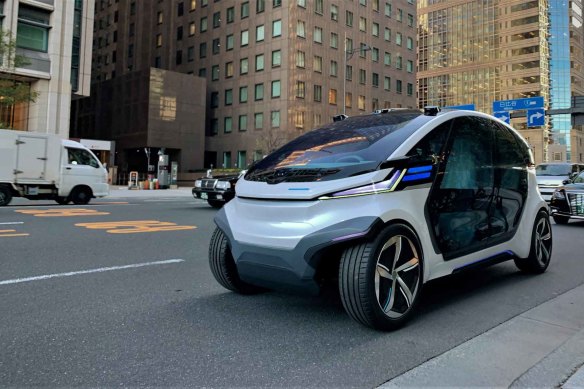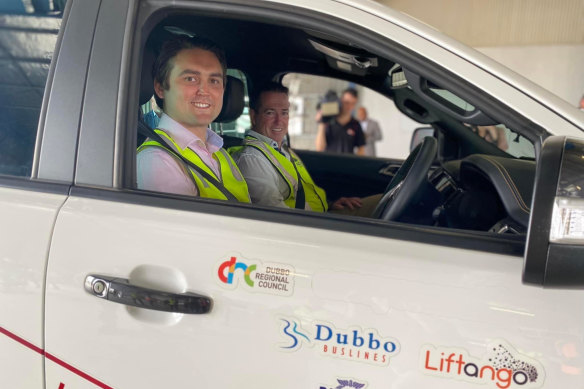This was published 2 years ago
Dedicated lanes for driverless cars an opportunity to fix transport network in NSW: report
By Daniel Lo Surdo
Dedicated lanes for driverless vehicles on NSW roads would enable the state to be better prepared for the introduction of fully automated cars, according to a new report which also warns the transport network is not ready to cope with the technology.
The University of NSW Research Centre for Integrated Transport Innovation found transport networks unprepared for driverless cars would disrupt the experiences of all users, suggesting dedicated autonomous vehicle lanes could improve the overall safety and traffic flow of roads.

A prototype of a solar-powered, driverless electric vehicle.
“There are very little provisions … to help facilitate these kinds of vehicles, and the reason behind that I’d say is because no one really knows how things are going to change when these vehicles with automation actually hit the market,” the lead author of the report, Shantanu Chakraborty, said.
“One of them could be dedicated lanes, where the vehicles can actually take these opportunities to get the best out of the system. So, if you do not facilitate or embrace this new technology, then we’ll never really move forward with these vehicles with automation.”
The head of technology and innovation at Transport for NSW, Sue Wiblin, said the agency will lay the foundation for driverless vehicles on state roads. She said the department has partnered with road operators to “ensure our motorways function with new life-saving automated technologies”.
When asked about introducing driverless car lanes on metropolitan roads and freeways, Ms Wiblin said research will “help inform how we may need to make changes in maintaining and improving our current road infrastructure, as well as how we design, build and manage smart infrastructure” for the future.
Minister for Metropolitan Roads Natalie Ward said the government was “always open to considering innovative options and new technology” in its planning.
Dr Chakraborty estimated it may still be a decade until fully autonomous vehicles can be safely introduced for public use, saying a “step-by-step” transition will be crucial to removing psychological barriers and gaining acceptance from road users.
Under Dr Chakraborty’s estimation, fully driverless cars would be rolled out five years after the completion of the Western Harbour Tunnel project.
Driverless vehicle trials are being conducted across NSW to consolidate the government’s plans to be a world-leading autonomous vehicle adopter by 2024.
Last month, Deputy Premier and Minister for Regional Transport and Roads Paul Toole announced a world-first driverless ute would begin testing in Dubbo, with plans to introduce the vehicle safely in automated mode by mid-2022.

Minister for Transport Paul O’Toole visits the NSW government’s Future Mobility Testing Facility in Dubbo in December.Credit: NSW government
Traffic continues to frustrate commuters, with an Infrastructure Australia report forecasting road congestion costs in Sydney, the Hunter and Illawarra could reach $15.7 billion in 2031.
“The thing we can do is optimise traffic flow,” Dr Chakraborty said. “So [when] the entire system is performing optimally, that means less congestion, more co-ordinated, there are less traffic jams and all of these things have a huge impact.
“This is actually a step towards future mobility.”
Autonomous vehicles are fitted with sensors which means drivers using autopilot features would not need to rely on their attention or reaction time to road conditions. When a traffic light goes green, for example, all vehicles can move simultaneously to minimise congestion.
Dr Chakraborty suggested this technology will also reduce emissions on NSW roads, which, as part of the transport sector, contributed to 20 per cent of the state’s greenhouse gas emissions in 2019.
The Morning Edition newsletter is our guide to the day’s most important and interesting stories, analysis and insights. Sign up here.